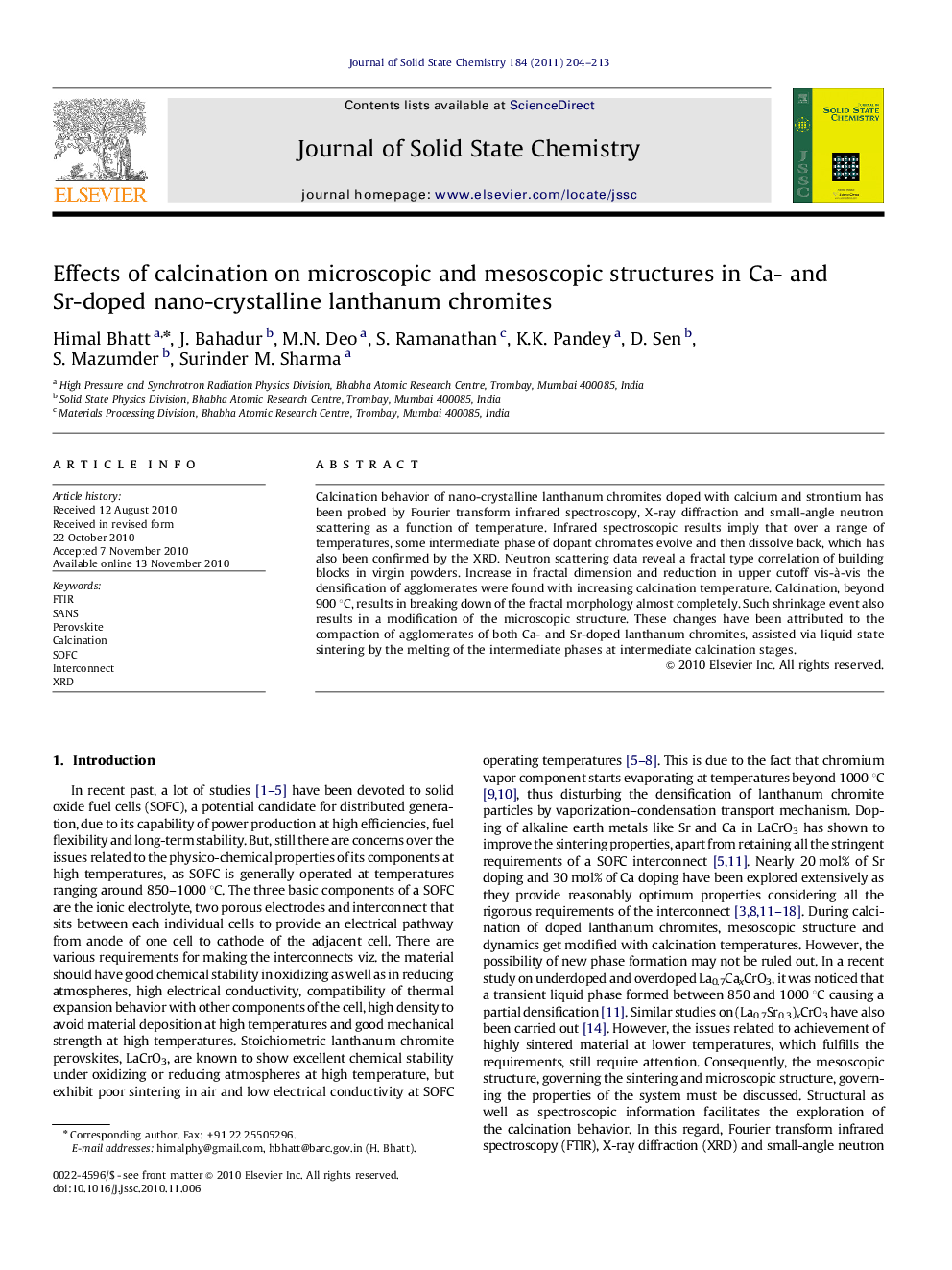| Article ID | Journal | Published Year | Pages | File Type |
|---|---|---|---|---|
| 1332232 | Journal of Solid State Chemistry | 2011 | 10 Pages |
Calcination behavior of nano-crystalline lanthanum chromites doped with calcium and strontium has been probed by Fourier transform infrared spectroscopy, X-ray diffraction and small-angle neutron scattering as a function of temperature. Infrared spectroscopic results imply that over a range of temperatures, some intermediate phase of dopant chromates evolve and then dissolve back, which has also been confirmed by the XRD. Neutron scattering data reveal a fractal type correlation of building blocks in virgin powders. Increase in fractal dimension and reduction in upper cutoff vis-à-vis the densification of agglomerates were found with increasing calcination temperature. Calcination, beyond 900 °C, results in breaking down of the fractal morphology almost completely. Such shrinkage event also results in a modification of the microscopic structure. These changes have been attributed to the compaction of agglomerates of both Ca- and Sr-doped lanthanum chromites, assisted via liquid state sintering by the melting of the intermediate phases at intermediate calcination stages.
Graphical AbstractDopant chromates evolve as intermediate phases during calcination of Ca- and Sr-doped nano-crystalline lanthanum chromites at intermediate temperatures, around 900 °C, evident from infrared spectroscopy. Such an event results in a modification of the microscopic and mesoscopic structures.Figure optionsDownload full-size imageDownload as PowerPoint slideResearch highlights► Meso/microscopic structures of La0.7Ca0.3CrO3 and La0.8Sr0.2CrO3 modify during calcination. ► Transient phases CaCrO4 and SrCrO4 appear at intermediate temperatures. ► Bond length, unit cell volume, etc. modify as intermediate phases evolve and extinct. ► Compaction of the agglomerates takes place due to liquid state assisted sintering.
